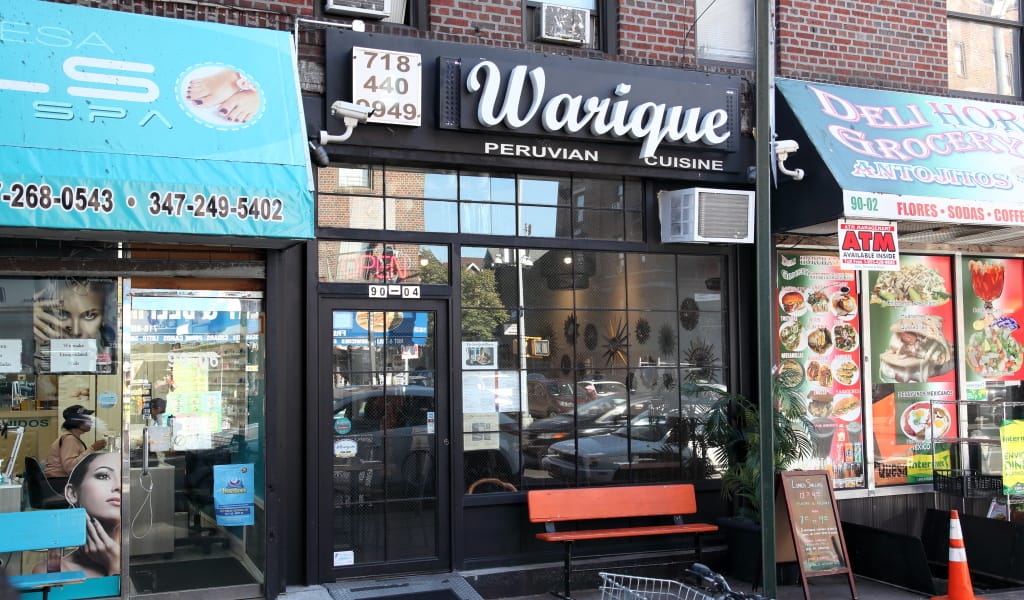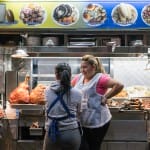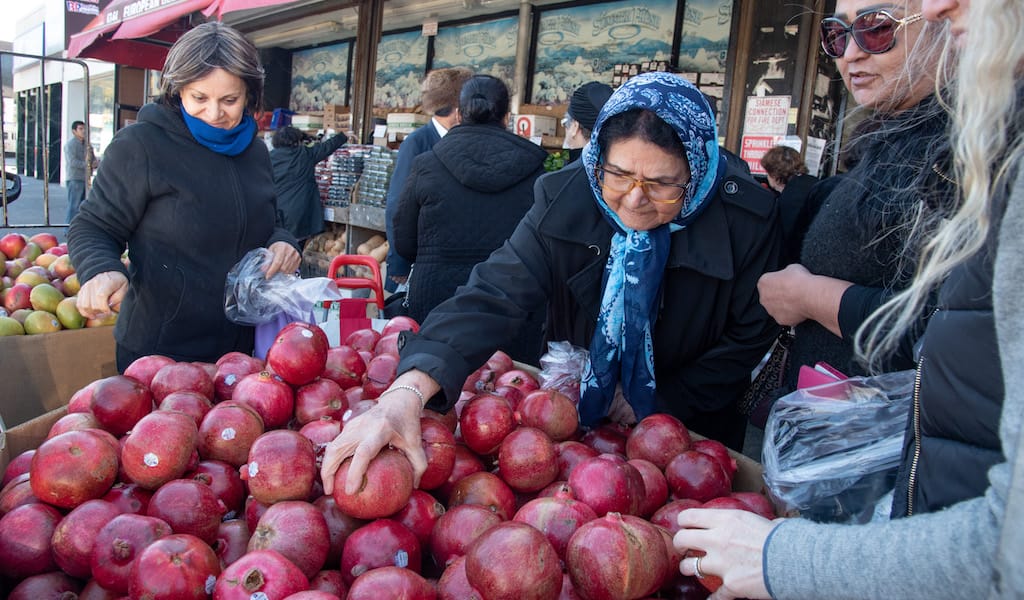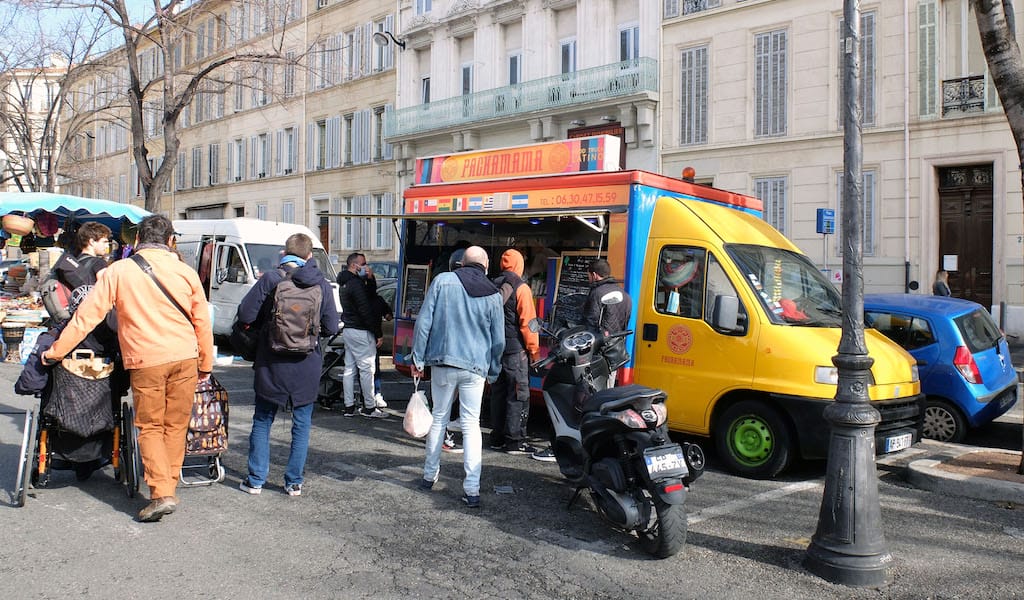In Quechua, a family of languages dating to the Inca Empire and still widely spoken in Peru, the word “wa” implies things that are hidden, or unknown. According to one widely held etymology, “warique” (wah-Ree-kay) suggests a secret place where one would go to savor food. Nowadays, keeping such a secret would be well and good for cultivating a sense of mystery, but not so good for building a clientele.
When we met Jimmy Lozano, 42, at Warique, his Jackson Heights restaurant, he offered a sense of the word that nods to the age of social media. “When you go to a place where they cook good” in Peru, he told us, “we say, ‘I found a warique.’”
The restaurant where we spoke with Jimmy – as well as the chef, Claudio Galindo, 29, through the translation of Jimmy’s wife, Maria – is his third by that name. Previously, Warique did business in Astoria, Queens, and before that in Manhattan.
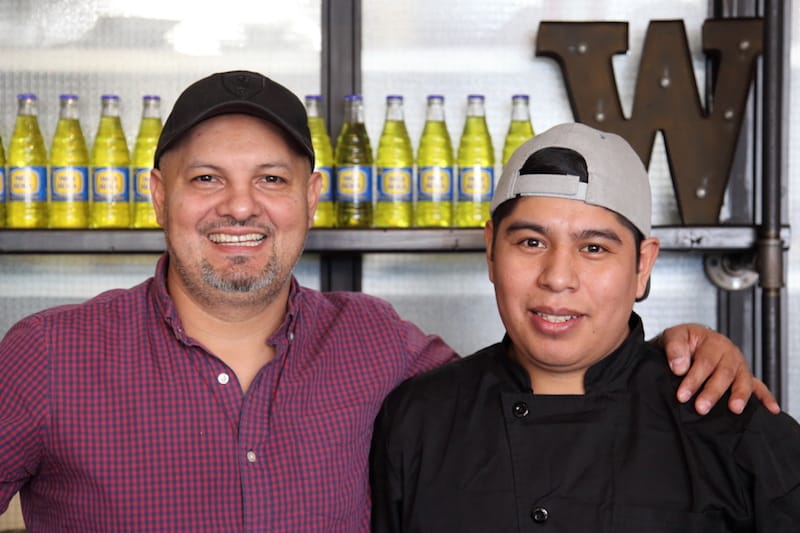
Earlier still was the warique that some of Jimmy’s cousins ran from their house in Pucallpa, Peru. It’s a riverside city in the Amazonian rainforest, far from the Andes, even farther from the ocean, where it’s “summer all the time.” Pucallpa is home to tropical fruits like chonta and cocona that we’ve found in New York only as frozen pulp, and river-going fish such as paiche that might never appear on an NYC menu.
Some things can’t easily be transplanted from tropical Peru to temperate New York City. But “a lot of things from my grandmother” can, Jimmy told us – not only culinary lessons such as the spice blend for his exquisite pollo a la brasa, or rotisserie chicken, but life lessons, too. Her emphasis on putting everything in the same place every time, for example, has been a valuable lesson for Jimmy’s own kids. For a restaurant kitchen that can never be roomy enough, it’s essential.
In his mid-teens, when he lived for several years with an aunt in Peru’s capital, Lima, on the country’s Pacific coast, Jimmy began more-intensive culinary training out of necessity: Returning home from school to a deserted kitchen, he found that if he wanted a hot meal, he had to learn to cook on his own.
Not long after, in 1994, Jimmy moved to Queens (and, we imagine, acquired a winter wardrobe). His longest-standing job was for a kosher catering company, for about ten years. Maria herself today works for a kosher caterer, except on those days when she’s lending a hand at Warique. (“This is a family business,” Jimmy noted.)
Jimmy opened his first Warique in 2011, on the far Upper West Side of Manhattan, within walking distance of Columbia University.
Some things can’t easily be transplanted from tropical Peru to temperate New York City. But “a lot of things from my grandmother” can, Jimmy told us.
The floor plan of the restaurant – quirky, but not unique in New York – included a single kitchen but twin dining rooms, which were divided by a staircase that led to four stories of apartments above. Customers could venture between dining rooms only by way of the sidewalk. Before our first dinner at the original Warique, we waited impatiently for friends in one room, only to find that they were waiting with equal hunger in the other. Once assembled, we ate well.
Perhaps Claudio cooked that meal. A native of Guerrero, Mexico, who first worked at Warique as a dishwasher, he displayed enough dedication to Peruvian cuisine that Jimmy ultimately put his grandmother’s secrets to good roast chicken into Claudio’s hands. (We did not attempt to pry them free.)
In 2015, when rent in Manhattan rose beyond Jimmy’s reach, he moved the restaurant to Astoria, Queens. After a business dispute compelled that location to close, Jimmy reopened Warique at its current location, on the site of a former taqueria, early in 2019.
Its current neighbors, lining the main east-west thoroughfares of Jackson Heights, include innumerable restaurants, bakeries and markets: Colombian, Ecuadorian, Mexican and Peruvian, to be sure, but Argentinean, Brazilian and Venezuelan, too. A walk down some side streets also reveals the occasional unlicensed enterprise at a residence – what might, in Peru, be called a warique. Maria recounted one behind a tipped-up garage door; we recalled another in the front room of a private house. When he was growing up, Jimmy said, no one in Peru complained about such informal businesses, but “things are changing now.” (The same can be said of Queens, particularly of its street vendors.)
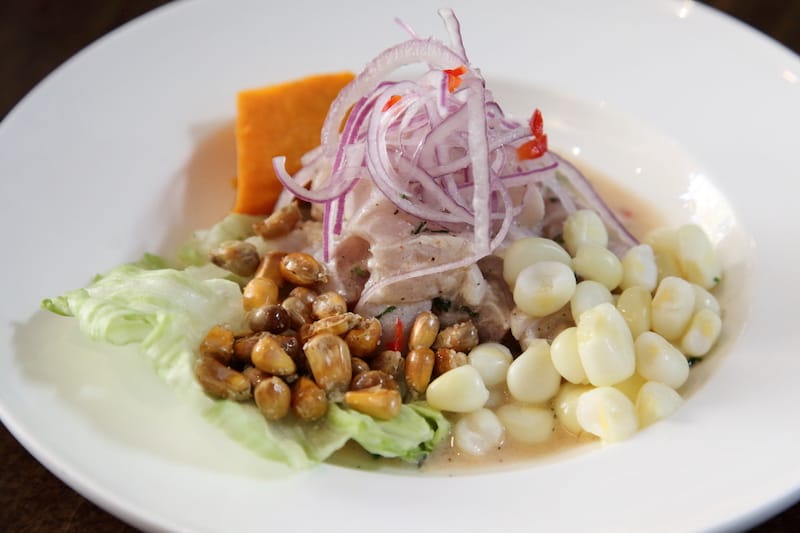
Although we had our heart set on the pollo, Jimmy insisted first on treating us to ceviche, prepared from imported corvina, a fish he described as “blue snapper.” How did this differ, we asked, from Warique’s tiradito, which we’d once tried in Manhattan?
Claudio (speaking through Maria) explained that tiradito is sliced thin, like sashimi, and seasoned with a pepper called aji amarillo; ceviche is cubed, and its intensity comes from a more fiery pepper, the rocoto. Tiradito is served almost immediately after this preparation, however, while ceviche is cured for perhaps 15 minutes. So, Claudio stressed, for each dish not only must you be exacting in “how you cut it” but also in when you serve it. When preparing ceviche, one must be “really patient.” The same restraint doesn’t apply to the diner. We dug right in – and were glad we could nibble at the customary wedge of sweet potato, which tempered the sting of the rocoto.
Our roast half-chicken, with fried rice and sweet plantains, followed soon after. In the greater New York area, pollo a la brasa is not as iconic or common as pizza by the slice. Even in many neighborhoods without a large Latin American population, however, it’s easy to find – but rarely with such bronzed, burnished skin. The Upper West Side still boasts its share of roast chicken, but “entire families follow us” to Queens, Maria declared, from the Manhattan neighborhood where Warique won over its first loyal customers.
Which is to say, they found a warique.
Published on December 09, 2019
Related stories
October 4, 2023
Queens | By Melanie Einzig
QueensHome to countless immigrant stories, Queens is the most diverse borough in New York City, with over two million people, half of whom were born outside the United States. So it’s no surprise that the area’s markets – some sprawling, many more pocket-sized – are equally as diverse, serving immigrant communities both old and new. We…
February 22, 2021
MarseilleAs the nearby church bells toll the noon hour, customers start to congregate around the Pachamama Sud food truck. Two men sip Argentinian beers at the counter, munching on chips and guacamole offered by the owner, Nanou. Another customer bellies up to the colorful truck, only to look confused by the menu. Nanou explains the…
January 7, 2024
Elsewhere | By Jose Rafael
ElsewhereQuick bite: On this full-day Queens food tour, we’ll visit Corona and Elmhurst, two of the boroughs more diverse neighborhoods where we will sample more than a dozen specialties of Latin America, Southeast Asia, South America and more. The largest of New York’s five boroughs, Queens is the home of over two million people, half…







































